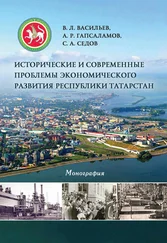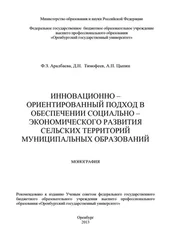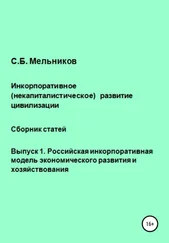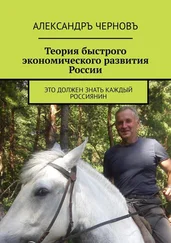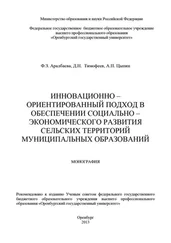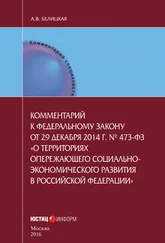Михаил Попов - Сокращение рабочего дня как основание современного экономического развития
Здесь есть возможность читать онлайн «Михаил Попов - Сокращение рабочего дня как основание современного экономического развития» весь текст электронной книги совершенно бесплатно (целиком полную версию без сокращений). В некоторых случаях можно слушать аудио, скачать через торрент в формате fb2 и присутствует краткое содержание. Год выпуска: 2016, Жанр: Политика, economics, на русском языке. Описание произведения, (предисловие) а так же отзывы посетителей доступны на портале библиотеки ЛибКат.
- Название:Сокращение рабочего дня как основание современного экономического развития
- Автор:
- Жанр:
- Год:2016
- ISBN:нет данных
- Рейтинг книги:4 / 5. Голосов: 1
-
Избранное:Добавить в избранное
- Отзывы:
-
Ваша оценка:
- 80
- 1
- 2
- 3
- 4
- 5
Сокращение рабочего дня как основание современного экономического развития: краткое содержание, описание и аннотация
Предлагаем к чтению аннотацию, описание, краткое содержание или предисловие (зависит от того, что написал сам автор книги «Сокращение рабочего дня как основание современного экономического развития»). Если вы не нашли необходимую информацию о книге — напишите в комментариях, мы постараемся отыскать её.
Сокращение рабочего дня как основание современного экономического развития — читать онлайн бесплатно полную книгу (весь текст) целиком
Ниже представлен текст книги, разбитый по страницам. Система сохранения места последней прочитанной страницы, позволяет с удобством читать онлайн бесплатно книгу «Сокращение рабочего дня как основание современного экономического развития», без необходимости каждый раз заново искать на чём Вы остановились. Поставьте закладку, и сможете в любой момент перейти на страницу, на которой закончили чтение.
Интервал:
Закладка:
42. Boulin J.-Y. French policies on working time A loss of meaning // Futures. June. 1993, pp. 587 - 601.
43. Bowman, John R. Capitalisms compared: welfare, work, and business. CQ Press. Los Angeles. 2013. - 376 p.
44. Brown M., Pitt-Catsouphes M., McNamara T. K., Besen E., Returning to the workforce after retiring: a job demands, job control, social support perspective on job satisfaction // The International Journal of Human Resource Management, 2014 Vol. 25, No. 22, pp.3113-3133.
45. Cheng Y., Du C.-L., Hwang J-J., Chen I-S., Chen M-F., Su T-C., Working hours, sleep duration and the risk of acute coronary heart disease: A case-control study of middle-aged men in Taiwan // International Journal of Cardiology №171 (2014), pp. 419-422.
46. Chung H.,Tijdens K. Working time flexibility components and working time regimes in Europe: using company-level data across 21 countries // The International Journal of Human Resource Management, 2013 Vol. 24, No. 7, pp.1418-1434.
47. Chung, H.-J. Economics: the user’s guide. Published by the Penguin Group. 2014. - 154 p.
48. Coe N. B., Zamarro G. Retirement effects on health in Europe // Journal of Health Economics №30 (2011), pp. 77-86.
49. Coote A., FranklinJ., Simms A. 21 hours: why a shorter working week can help us to flourish in 21 stcentury//The new economics foundation. 2010, February, pp. 38.
50. Coppola M., Wilke C. B. At What Age Do You Expect to Retire? Retirement Expectations and Increases in the Statutory Retirement Age // Fiscal studies, vol. 35, no. 2, (2014), pp. 165-188.
51. Costa D. L. The unequal work day: a long -term view. // NBER Working Paper No.6419, 1998, pp. 1-12
52. Costa D.L. The Wage and the Length of the Work Day: From the 1890s to 1991 // Journal of Labor Economics Vol. 18, No. 1, pp. 156181.
53. Dembe A. E. Factors shaping the development of working time regulation in the United States and Europe // International Labour Review, Vol. 150 (2011), No. 3-4, pp. 419 - 429.
54. Fischer F. M., Puttonen S., Skene D. J. 21st International Symposium on Shiftwork and Working Time: The 24/7 Society -From chronobiology to practical life // Chronobiology International, 2014; № 31(10): pp.1093-1099.
55. Garda-Perez J.I., Jimenez-Martm S., Sanchez-Martm A. R. Retirement incentives, individual heterogeneity and labor transitions of employed and unemployed workers // Labour Economics №20 (2013), pp. 106-120.
56. Garnero A., Kampelmann S., Rycx F. Part-time work, wages, and productivity: evidence from Belgian matched panel data // Industrial & Labor Relations Review, № 67(B), July 2014, pp. 926-954.
57. Gimenez-Nadal J.I., Sevilla A. Total work time in Spain: evidence from time diary data // Applied Economics, 2014 Vol. 46, No. 16, pp.1894-1909.
58. Giugale, M. M. Economic development: what everyone needs to know. Oxford University Press. 2014. - 503 p.
59. Glazer S. Six of One, Half a Dozen of the Other: Problems With Working Fixed and Rotating Shifts // International Journal of Stress Management 2005, Vol. 12, No. 2, pp. 142-163.
60. Goerke L., Hillesheim I. Relative consumption, working time, and trade unions // Labour Economics №24 (2013), pp. 170-179
61. Gordo L.R , Skirbekk V. Skill demand and the comparative advantage of age: Jobs tasks and earnings from the 1980s to the 2000s in Germany // Labour Economics №22 (2013), pp. 61-69.
62. Hairault J-O., Langot F., Sopraseuth T., Distance to retirement and older workers’ employment: the case for delaying the retirement age // Journal of the European Economic Association September 2010 -8(5): pp.1034-1076.
63. Harsh J., Yang R., Hull S. G. The impact of shift duration on the efficacy and tolerability of armodafinil in patients with excessive sleepiness associated with shift work disorder. // Current Medical Research & Opinion Vol. 30, No. 5, 2014, pp. 945-951.
64. Hart R. A. The Economics of Overtime Working. Cambridge University Press. - 10 p.
65. Herzog-Stein A., Zapf I. Navigating the great recession: the impact of working-time accounts in Germany// Industrial & Labor Relations Review, 67(3), 2014, pp. 891-925.
66. Huberman M., Minns C. The times they are not changin’: Days and hours of work in Old and New Worlds, 1870-2000 // Explorations in Economic History №44 (2007), pp. 538-567.
67. Harma M., Partinen M., Repo R., Sorsa M., Siivonen P. Effects of 6/6 and4/8watch systems on sleepiness among bridge officers // Chronobiology International. 2008, №25, pp. 413-423.
68. Izquierdo S. C. A value-oriented distinction between productive and unproductive labour // Capital & Class №90, 2006, pp. 37-63.
69. Kallis G., Kalush M, Flynn H.O., Rossiter J., Ashford N. “Friday off’: Reducing Working Hours in Europe // Sustainability 2013, №5, pp.1545-1567.
70. Kalwij A., Alessie R., Knoef M., Pathways to Retirement and Mortality Risk in The Netherlands // Eur J Population (2013) 29: 221-238.
71. Karhula K., Harma M., Sallinen M, Hublin C., Virkkala J., Kivimaki M., Vahtera J.,Puttonen S. Association of job strain with working hours, shift-dependent perceived workload, sleepiness and recovery // Ergonomics, 2013 Vol. 56, No. 11, pp. 1640-1651.
72. Lakey G. Viking economics: How the Scandinavians Got it Right - and How We Can, Too. Melville House. 2016. - 287 p.
73. Lawless M., Whelan K.T. Understanding the dynamics of labor shares and inflation / Martina Lawless, Karl T. Whelan // Journal of Macroeconomics. - 2011. - No. 33.
74. Lehndorff S. It’s a long way from norms to normality: the 35-hour week in France // Industrial & Labor Relations Review, №67(3), July 2014, pp.838-863.
75. Lehndorff S., Wagner A., Franz C. Development of working time in the EU Pub.: Thomas Handel /Dr. Axel Troost. 2010. - 145 p.
76. Mahlberg B., Freund I., Cuaresma J.C., Prskawetz A. Ageing, productivity and wages in Austria // Labour Economics № 22 (2013), pp.5-15.
77. Mao H, Ostaszewski K. M., Wang Y. Optimal retirement age, leisure and consumption // Economic Modelling № 43 (2014), pp. 458-464.
78. Marchand O. An international comparison of working times // Futures. June 1993, pp. 502 - 510.
79. Marsh, P. The New Industrial Revolution: Consumers, Globalization and the End of Mass Production. Yale University Press. New Haven and London. 2012. -311 p.
80. Mattesini F., Quintieri B., Does a reduction in the length of the working week reduce unemployment? Some evidence from the Italian economy during the Great Depression. // Explorations in Economic History № 43 (2006), pp. 413-437.
81. McGrattan E. R. Changes in the Distribution of Family Hours Worked Since 1950 - Federal Reserve Bank of Minneapolis and University of Minnesota 1998- 32 p.
82. Miles L. The Capabilities Approach and Worker Wellbeing // The Journal of Development Studies, 2014 Vol. 50, No. 8, pp.1043-1054.
83. Mohun, S. Unproductive Labor in the U.S. Economy 1964-2010// Review of Radical Political Economics. 2014, Vol. 46 Issue 3, pp. 355-379.
84. Nixson, F. Development Economics. Second Edition. Heinemann. 2001 .-124 p.
85. Pouwels B, Siegers J, Vlasblom J. D. Income, working hours, and happiness // Economics Letters №99 (2008), pp. 72-74.
86. Prescott E.C. Why Do Americans Work So Much More Than Europeans? // Federal reserve bank of Minneapolis Quarterly Review vol. 28, № 1,(2004), pp. 2-13.
87. Prescott E.C., Rogerson R., Wallenius J. Lifetime aggregate labor supply with endogenous workweek length // Review of Economic Dynamics №12 (2009), pp. 23-36.
88. Pullinger M. Working time reduction policy in a sustainable economy: Criteria and options for its design // Ecological Economics №103 (2014), pp. 11-19.
89. Radl J. Too old to work, or too young to retire? The pervasiveness of age norms in Western Europe // Work, employment and society №26(5), pp. 755-771.
Читать дальшеИнтервал:
Закладка:
Похожие книги на «Сокращение рабочего дня как основание современного экономического развития»
Представляем Вашему вниманию похожие книги на «Сокращение рабочего дня как основание современного экономического развития» списком для выбора. Мы отобрали схожую по названию и смыслу литературу в надежде предоставить читателям больше вариантов отыскать новые, интересные, ещё непрочитанные произведения.
Обсуждение, отзывы о книге «Сокращение рабочего дня как основание современного экономического развития» и просто собственные мнения читателей. Оставьте ваши комментарии, напишите, что Вы думаете о произведении, его смысле или главных героях. Укажите что конкретно понравилось, а что нет, и почему Вы так считаете.


